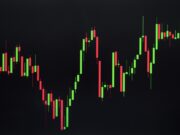President Trump’s latest 30% tariffs on the European Union and Mexico have reignited gold’s powerful rally, pushing the precious metal to multi-week highs as investors seek shelter from mounting trade uncertainties. With gold posting impressive gains of around 28% year-to-date, the metal is dramatically outperforming the S&P 500’s more modest advances while traditional safe havens like U.S. Treasuries struggle with volatility.
Professional investors are positioning aggressively for continued gains, with some forecasting gold could reach around $3,650 per ounce over the next 12 months. The convergence of geopolitical tensions, Federal Reserve policy expectations, and global central bank reserve diversification is creating a powerful fundamental backdrop that portfolio managers believe has further to run.
VanEck Gold Miners ETF (GDX): Leading the Mining Sector Surge
The VanEck Gold Miners ETF has delivered exceptional performance with returns approaching 55% since the start of the year, providing broad exposure to established gold mining operations. This ETF offers investors diversified access to the gold mining sector without requiring individual stock selection or research.
The fund’s strong performance reflects the operational leverage that mining companies provide to gold price movements. As gold prices advance, mining companies with established operations typically see margins expand significantly, translating gold’s gains into amplified equity returns.
For investors seeking gold exposure through equities while maintaining diversification across multiple mining operations, this ETF represents a strategic middle ground between individual stock picking and direct commodity exposure.
VanEck Junior Gold Miners ETF (GDXJ): High-Growth Potential
The VanEck Junior Gold Miners ETF has posted even more impressive gains with returns exceeding 60% year-to-date, demonstrating the enhanced leverage that smaller mining companies provide during gold rallies.
Junior miners typically offer higher growth potential during favorable market conditions, as these companies often operate with higher operational leverage and greater sensitivity to gold price movements. However, this enhanced sensitivity creates both opportunities and risks that investors must carefully consider.
Chee Keong Koh, head of forex strategy at wealth management firm WRISE, specifically recommends both VanEck ETFs as opportunities for investors seeking gold exposure. The junior miners ETF particularly appeals to investors willing to accept higher volatility in exchange for potentially greater upside participation in gold’s continued advance.
Barrick Gold: Established Mining Leader
Barrick Gold represents one of the world’s largest gold mining companies, offering investors exposure to a well-established operation with global diversification across multiple mining jurisdictions.
Koh identifies Barrick as presenting “solid opportunities given their solid earnings growth and strategic positioning in the gold market.” The company’s scale and operational efficiency position it to capitalize on sustained higher gold prices while maintaining cost discipline across its mining operations.
As an established senior miner, Barrick provides investors with gold exposure through a company with proven operational capabilities, diversified asset base, and established track record of navigating various market cycles.
Newmont Corporation (NEM): Industry Giant with Strategic Assets
Newmont Corporation stands as another mining industry leader that professional investors are targeting for gold exposure. The company’s strategic positioning and operational scale make it a preferred vehicle for institutional investors seeking large-cap gold mining exposure.
Like Barrick, Newmont benefits from operational leverage to gold prices while maintaining the operational stability and financial resources to weather market volatility. Koh’s recommendation reflects the company’s combination of “solid earnings growth and strategic positioning” that makes it attractive during the current gold rally.
The company’s established operations and financial strength provide investors with exposure to gold price appreciation through a vehicle with demonstrated operational capabilities and market presence.
Physical Gold: Direct Commodity Exposure
For investors seeking the most direct gold exposure, physical gold ownership remains a consideration despite storage and insurance requirements. Alonso Munoz, chief investment officer at Hamilton Capital Partners, advocates for physical gold ownership among his high-net-worth clients and family offices.
“I’ve always thought that if investors own gold, for its safety and protection against catastrophe and significant drops in the market, they should own it physically versus just tracking the price of gold in a product where there’s counterparty risk,” Munoz explains.
Physical gold eliminates counterparty risk associated with ETFs and other gold-tracking instruments while providing direct exposure to gold price movements. For investors with 5% portfolio allocations to gold, the cost savings versus ETF management fees can be substantial, though storage costs must be factored into the investment decision.
Market Outlook and Professional Positioning
Investment professionals are positioning for continued gold strength based on multiple fundamental drivers. Stefan Hofer, chief investment strategist APAC at LGT Private Banking Asia, forecasts gold reaching around $3,650 per ounce within 12 months – representing potential upside of close to 10% from recent levels.
“Inflation expectations are going up. People are going to be buying gold against that,” Hofer noted, while dismissing more aggressive price targets above $5,000 per ounce as “outlandish.”
The World Gold Council’s recent survey data supports this bullish outlook, with 95% of respondents forecasting increases in global central banks’ gold reserves over the next 12 months. Perhaps more significantly, 73% predict substantially lower U.S. dollar holdings within reserves over the next five years, suggesting structural demand for gold alternatives.
WRISE’s Koh expects spot gold to trade between around $3,100 and $3,500 for the remainder of 2025, recommending investors consider entering positions closer to the lower end of that range “as part of a broader portfolio diversification strategy.”
Investment Strategy Considerations
Professional investors are implementing gold exposure across multiple approaches, from direct physical ownership to diversified mining ETFs. The key consideration involves balancing direct commodity exposure against the operational leverage that mining companies provide.
Munoz emphasizes gold’s performance “as a hedge, at least certainly during the first and second quarter, where we had a lot of volatility in high-risk assets.” This hedging capability has attracted increased investor interest as traditional safe havens like U.S. Treasuries have struggled with their own volatility.
However, some professionals question gold’s continued dominance as the primary safe-haven asset. Will McDonough, CEO of merchant bank Corestone Capital, suggests that “bitcoin is taking a lot of energy away from gold” and that copper offers more real-world use cases, potentially creating competition for traditional safe-haven allocation.
Despite these competitive concerns, the convergence of tariff uncertainties, inflation expectations, and central bank diversification suggests gold’s rally has fundamental support that extends beyond short-term trading dynamics. For investors seeking portfolio diversification and protection against continued policy uncertainty, professional positioning in gold-related investments offers multiple pathways for exposure to this continuing precious metals rally.






